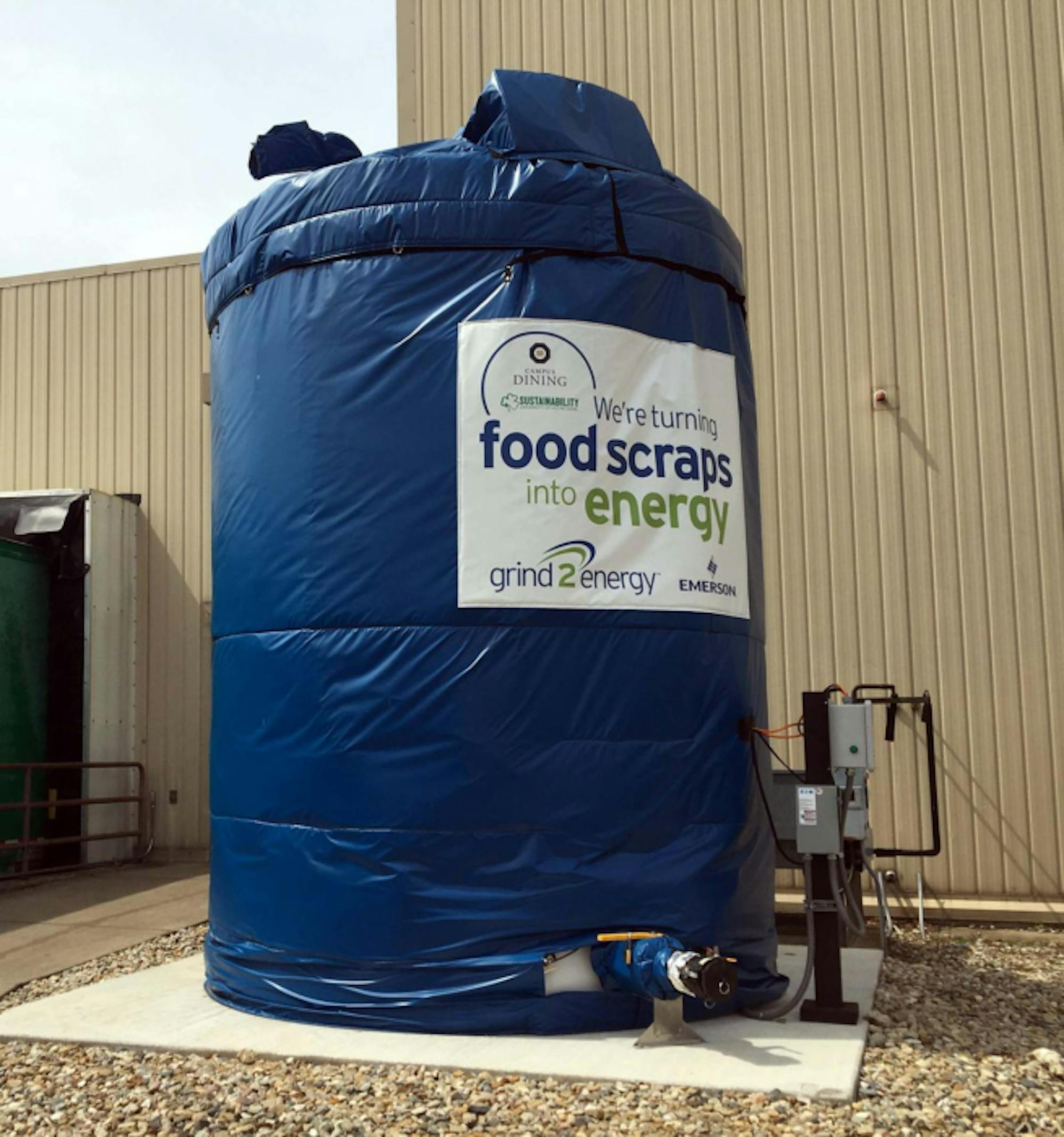College campuses throw out on average 22 million pounds of food each year, according to the Food Recovery Network. With North and South Dining Halls serving thousands of meals each day, Notre Dame is no stranger to food waste.
During the 2019-20 academic year shortened by the COVID-19 pandemic, the two dining halls and Center for Culinary Excellence (CCE) churned out more than 284 tons of food waste and leftover food, according to data provided by the Office of Sustainability.
So what does the University do with all of its excess food and scraps?
The Office of Sustainability and Campus Dining have constantly been searching for ways to minimize the amount of food that ends up in landfills for years, acting senior director of sustainability Carol Mullaney said. There are currently four primary means of repurposing excess food and waste from the dining halls and CCE, Campus Dining director of supply chain and sustainability Cheryl Bauer said.
Nonprofit collects and donates leftovers to community organizations
The first process is a South Bend-based not-for-profit group called Cultivate Food Rescue regularly picks up untouched leftover food a few times per week, Bauer said. Cultivate has partnered with over 100 pantries and community organizations in Northern Indiana and distributes the food to its partners.A student group called Food Rescue used to pick up and donate the leftover food to community organizations, but during the pandemic, Campus Dining switched to having Cultivate pick up all the leftover food from the dining halls and CCE because it is easier for them to transport larger amounts of food and they have a more streamlined process, Bauer said.
Food Rescue still collects and donates leftover food from retail outlets around campus, such as Au Bon Pain.
In 2019-20 and 2020-21, Cultivate collected 29.7 and 24.5 tons of food respectively from the dining halls and CCE, according to data from the Office of Sustainability.
Cultivate also partners with athletics and collected and repurposed more than 20,000 pounds of excess food from Notre Dame Stadium this year, according to a University press release.
Massive ‘InSinkErator on steroids’ converts food waste to energy
The second means of repurposing excess food from the dining halls is converting the food waste into clean, renewable energy via the Grind2Energy system. The University implemented the system — which can take almost all food waste — in 2019, first by installing a system outside of the CCE and later outside of both dining halls.“Grind2Energy is basically like your disposal at home in your sink. It's just massive and an InSinkErator on steroids,” Bauer said. “Because it will take the tops of pineapple, it will take beef bones, and it pulverizes them and turns them into a slurry, or a liquid with the solids suspended in it.”

The slurry is then pumped into trucks and transported to an anaerobic digestion facility at Homestead Dairy in Plymouth, Indiana — located about 35 minutes south of campus. The anaerobic digestion recovers water and captures methane, which can then be converted into renewable energy such as electricity or compressed natural gas. The resulting solid and liquid byproduct can be converted into dairy bedding and fertilizer.
Campus dining currently does not have enough staff to use Grind2Energy this semester due to the labor shortage, but Bauer hopes they will be able to begin using the system again in the spring.
In the COVID-shortened 2019-20 year, the dining halls and CCE put 254.6 tons of waste through the Grind2Energy system, according to the Office of Sustainability. That number dropped to 82.2 tons during the 2020-21 school year due to alterations to food serving caused by the pandemic.
Local farmer feeds livestock with scraps, Campus Dining repurposes leftovers itself
Additionally, a local farmer who used to be a butcher at the University often comes and picks up scraps to feed to livestock on his farm in Michigan, Bauer said.The final common means of repurposing excess food is simply reheating it and serving it again.
“If there's a whole pan of chicken breasts left, we’ll dice those up for the salad bar,” Bauer said. “That's one that almost would never get donated because we have something that we can do with it that's a very acceptable way to use it.”
Dining hall changes hope to limit waste
One change in the dining halls targeted at limiting waste is that trays are no longer offered. Because meals were served in to-go containers last year, there was no need for trays. And while these containers were originally being thrown away, program manager for sustainable operations Greg Koehler even found a way of repurposing the containers with food residue on them.Koehler discovered that the containers could be sent to a plant in Indiana called Brightmark Energy that could convert the containers into low-sulfur diesel fuel through a process called pyrolysis.
The containers are now gone, but the trays also remain gone. Koehler said the dining halls are no longer providing trays in part to encourage students to take less food and because there is not enough staff to clean them.
Bauer said she expects the amount of waste generated by the dining halls to continue to go down this year because of changes to the menus. This year, more build-your-own meals, such as sandwiches and quesadillas, are offered than usual, especially at lunch.
“Anytime you have a build-your-own option, the chance of having a waste that you would have a hard time reusing diminishes greatly compared to hot prepared dishes,” Bauer said. “It doesn't create a lot of waste that cannot be reused because those things are kept at cold temperatures or hot temperatures, so they're always food safe.”
The shift to more build-your-own meals is also a result of the labor shortage, as those types of meals require less preparation, Bauer said.
With several adaptations to the dining halls and innovative ways to repurpose excess food, Mullaney said the University is always looking for ways to reduce waste.
“We're always open to looking at new ideas and trying to capture more of it. I mean, in an ideal world, right, we would have a solution where we could capture 100% and no food waste goes into a landfill,” Mullaney said. “That's what we're striving towards. There's a lot of work to get there.”













